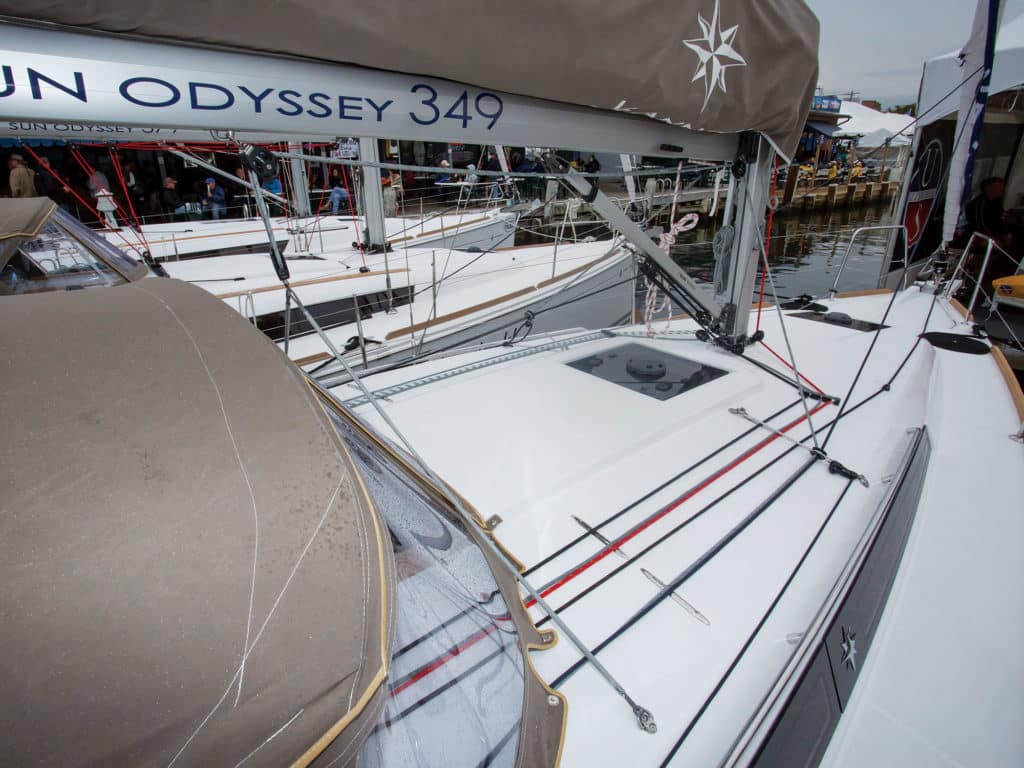
As a lifelong racing sailor, I’m well familiar with the go-fast, lightweight sailhandling hardware and line favored by serious buoy chasers. These come in myriad sizes and setups, but they often involve low-friction rings rather than blocks, clever use of Spectra (or other exotic and semiexotic materials) for strops (spliced loops), and freely articulating soft shackles to connect gear to the boat. While this evolution is partially bolstered by the advent of new rope-making fibers (see below), it’s also being driven by boatbuilders’ and consumers’ demands for lighter-weight and lower-cost equipment that looks cool and can handle big loads. Here’s a look at some of the benefits that they offer.
The Fundamentals
Let’s begin with sails and cordage. The past few decades have seen substantial evolution in the materials that are used to build cruising sails. While some sailors are still hoisting (relatively) stretchy Dacron sails, plenty of others have upgraded their inventory to low- or no-stretch sails that are made from Spectra or other exotic fibers that are woven or 3D-printed onto molds. Even some Dacron cruising sails are now being constructed using similar 3D-printing techniques to generate higher-performance, lower-stretch sails.
Likewise, there’s been a big jump in the availability of high-strength, low-diameter rope that replaces basic polyester lines which, by comparison, can be stretchy, thick and heavy. While there’s no question that these new sails and cordage offer much higher performance than the sails your grandparents bent onto their Hinckley Sou’wester, there’s also no question that these new materials put greater strain on your boat and its sailhandling equipment.
“The dynamic loading on all the gear and rigging is greater on boats with high-tech sails,” says Jim Andersen, Harken’s US sales manager. “There’s less shock absorption of such loading due to the more-stable sails and running rigging with minimal stretch.”
Others agree. “Shock loads are quite a bit higher with high-tech sails and with high-tech fiber ropes,” says Alan Prussia, Ronstan’s commercial manager of marine products. Particularly, he points to Dyneema and Spectra, among other minimal-stretch materials. When upgrading an older boat, Prussia says, “decks need to be inspected to make sure the core is good structurally and that proper backing plates are used.”
Dealing with these loads and lower-diameter cordage isn’t typically problematic so long as owners work with their riggers and sailmakers to eliminate weak links. “It’s very important to understand how one change can affect the performance of other products in the system,” says James Hall, Spinlock’s marketing and sales manager.
While line and sail-inventory upgrades commonly drive sailors to find better sailhandling options, these changes are also being driven by new models with modern sail plans, which typically use easier-to-trim-in, non-overlapping headsails—rather than the big, overlapping genoas of yore—and by a desire to create a new, cleaner-looking aesthetic.
Ring Things
A good example of this is the floating jib lead, which consists of a simple, low-friction ring that “floats” above the deck. Its position is controlled by a keeper strop (typically a Spectra loop that’s spliced around the ring’s circumference and led through one or more deck- or cabin-top-mounted padeyes) and one or more barber haulers that replace an adjustable fairlead and deck track. Such a setup provides significantly more trim and sail-shape options. While this is standard-issue stuff on most racing sailboats, it’s a configuration that’s now gracing some more-mainstream designs. “Floating leads, soft loops and rings are all becoming more popular on cruising yachts, especially new builds, because they look modern, light and clean,” Hall says.
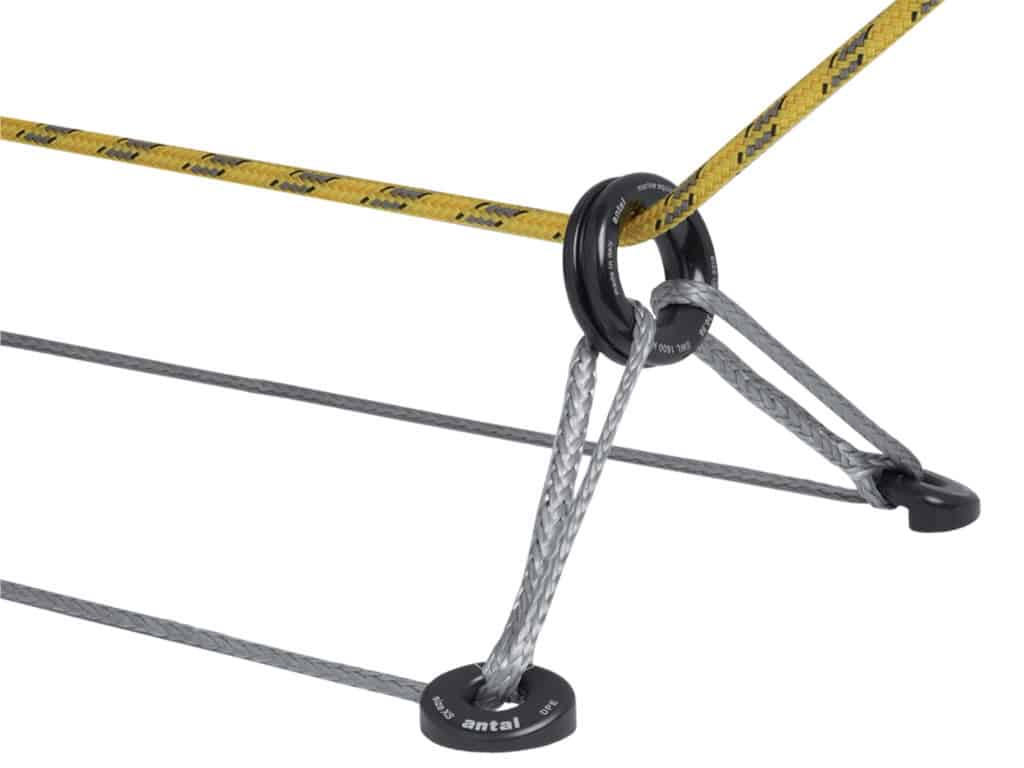
One important consideration for a sailor who’s contemplating an upgrade is that a jib lead that’s suspended in space by strops and sheeted-on loads offers more trim options—and because of that, more opportunities to make incorrect adjustments. “I think floating leads are difficult for many sailors to figure out,” Prussia says.
He advises that before upgrading or buying a boat with floating leads, owners should consider their sailing style and sail-trimming skills (or desire to bolster those skills). Some will enjoy the challenge of eking out perfect sail shape, but such a system might not be as appealing to passagemaking sailors who aren’t concerned about capturing 0.1-knot efficiencies.
Still, Prussia notes that low-friction rings can work well elsewhere on a boat.
“We have had many inquiries about using low-friction rings for furling-line leads along stanchion bases, jib outhaulers (for better reaching angles) and boom preventers,” he says. “These are perfect applications for this type of product.”
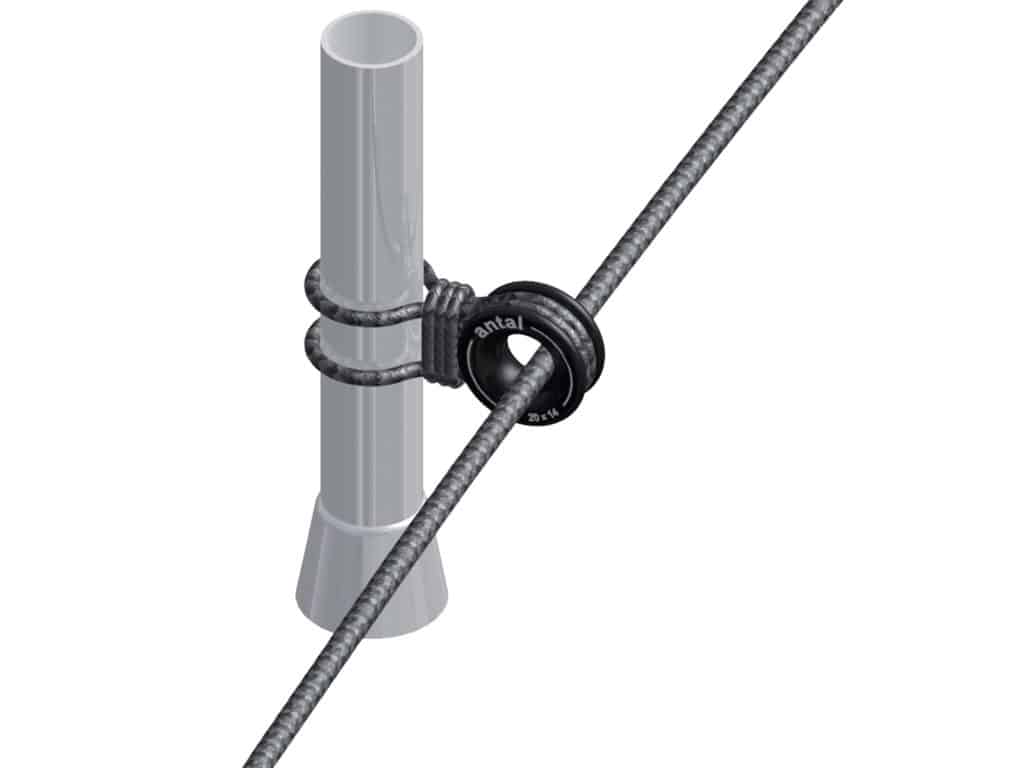
Some experts remain skeptical though. “We’ve seen more people trying the apparent simplicity and less-expensive friction rings,” Andersen says, but he adds that the word “friction” is the sticky wicket. “Rings are really only appropriate for shallow deflection (less than 30 percent) or lead-angle changes. That’s why Harken calls them lead rings. They’re not an appropriate replacement for a proper pulley for a 45- to 180-degree turn or a multipart purchase system where efficiency is the aim, and where adding friction defeats the mechanical-advantage goal of a block and tackle.”
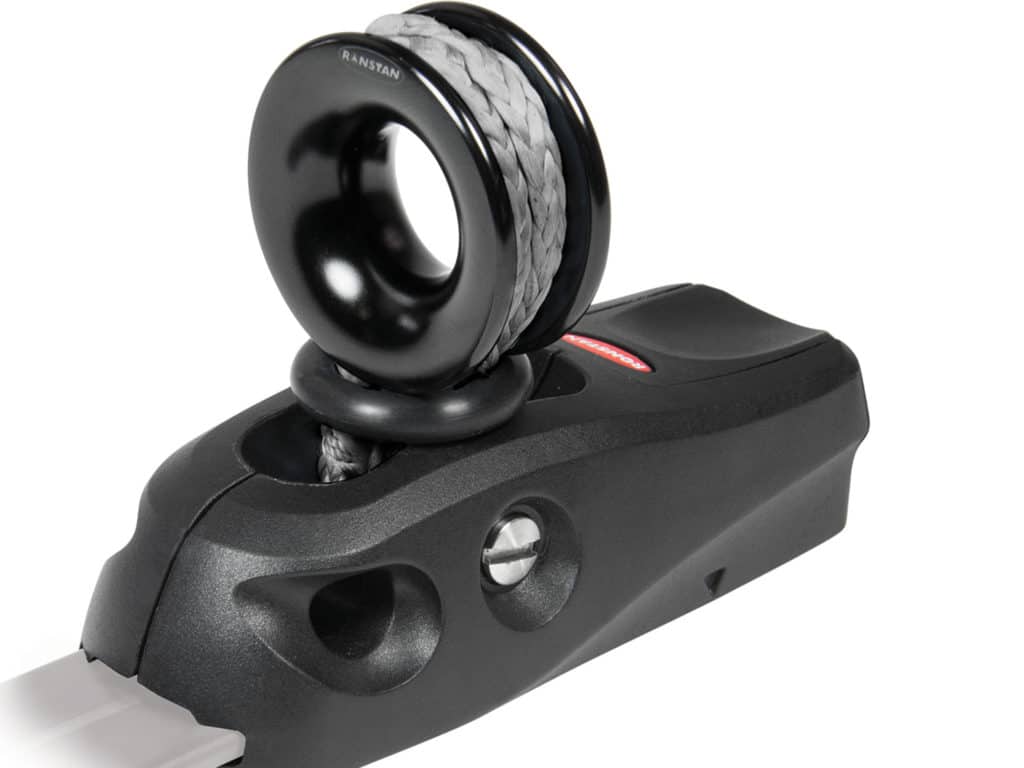
Friction is obviously a concern with any running rigging, but Siebe Noordzy, the owner of Euro Marine Trading and the US importer of Antal marine equipment, says high-strength, low-stretch cordage naturally helps ameliorate some of these concerns. “With the increased use of Dyneema lines, which are very slippery by nature, over the past three years, Antal has been concentrating on creating low-friction equipment, which is no longer using sheaves,” he says. The gear is light, strong and easy to install, and now it’s commonly seen on cruising boats.
Soft and Tough
Gear experts might be split on their thoughts concerning floating leads and rings, but most agree that spliced strops and soft shackles are racing crossover equipment that—if properly maintained—can be a lightweight and simple upgrade. “There’s an almost explosive trend toward using soft shackles,” Noordzy says. “They’re easy to mount, weigh less [than traditional hardware and] are very strong. One only has to be careful not to mount them around sharp edges.”
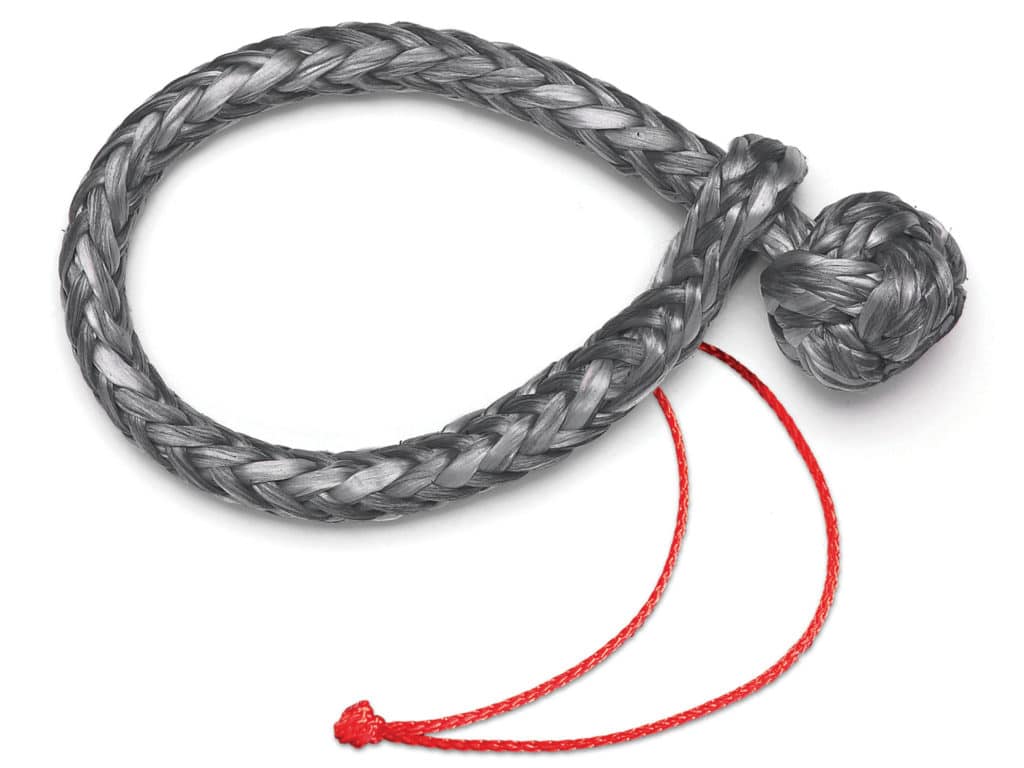
Soft Shackle
Prussia agrees: “The applications are endless, and they offer a lower-cost solution than traditional snap shackles, standard shackles, quick links and carabiner-style products.” But, as with all good things, soft shackles have their downsides, starting with the fact that they’re not easy to release under load (racer tip: make sure there’s a sharp knife on deck and in each watch captain’s pocket) and can be hard to mechanically evaluate. “Deformation, rust or wear on a stainless-steel shackle is something almost anyone can relate to, and understand that there may be a problem with overloading, underspecification or simply wear,” Andersen says. But with synthetic strops and shackles, “fiber plating, interfiber chafe and UV degradation is harder to identify without training or experience.”
This matters, of course, because soft strops and shackles can fail, just as worn or defective stainless-steel hardware can, often with similarly less-than-desirable outcomes.
The story here is that you have options. If you’re upgrading sails and running rigging to more-exotic materials, or if your boat simply needs a sailhandling refresh, consider some of these solutions. And while floating-jib leads could be best-suited for reformed racers, other technologies such as rings, spliced strops and soft shackles are all great, cruising-friendly choices that offer some weight-saving and possibly cost-saving gains while also adding a decidedly sleek aesthetic.
David Schmidt is CW’s electronics editor and occasionally reports on other gear.








